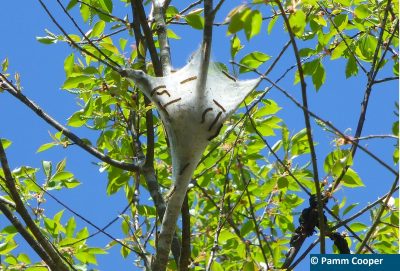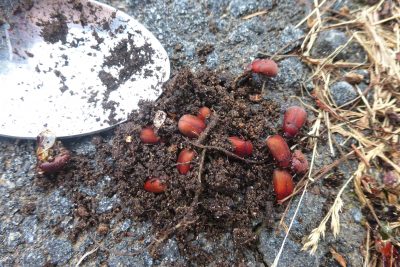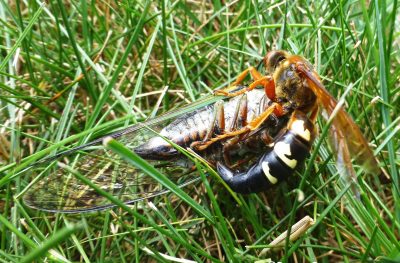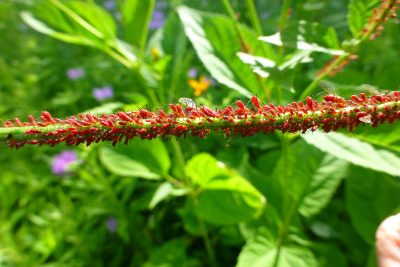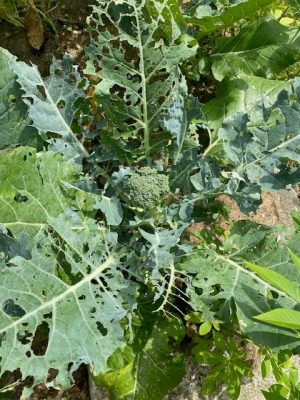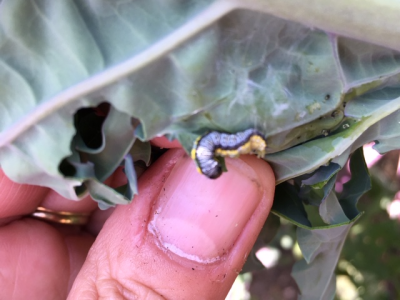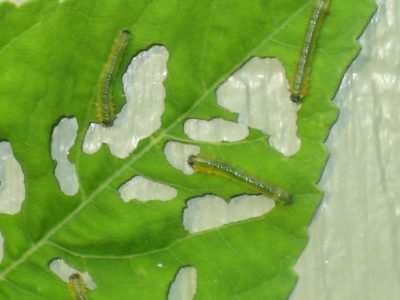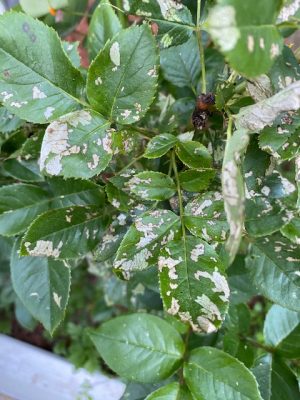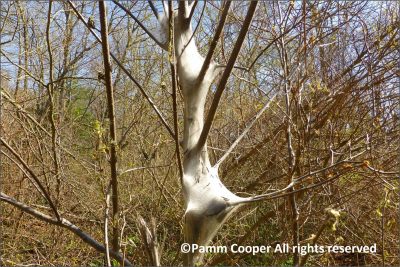By Heather Zidack, UConn Home & Garden Education Center
Did you notice a few unwelcome guests trying to steal a sip from your soda can at your Labor Day picnics last weekend? In late August/Early September, bees and wasps are highly visible, more persistent, and at their peak populations in social hives. We get a lot of calls this time of year asking what can be done to remove them from shared spaces.
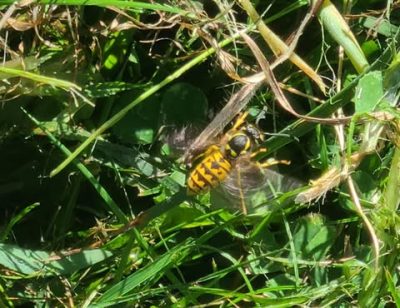
Thousands of described species are spread across 7 taxonomic families, worldwide. Eusocial species, like honeybees and paper wasps, have complex social structures that contribute to the overall survival of the hive. Meanwhile, a large majority of species are solitary and may live close to similar species but don't work together when it comes to provisioning resources or defending a territory. Diets range from carnivorous to herbivorous. However, most of them have developed a relationship with flowering plants in some capacity. Some are specialists, needing specific flowers for various resources, while others are generalists. Flowers have co-evolved with these insects so that they may benefit from the relationship via pollen distribution. Only those that help to move pollen are considered pollinators, though many may feed on floral resources. Entomologists dedicate their entire careers to understanding these insects and their complex relationships with the larger world.
So why do they bother us around Labor Day but not so much during other summer picnics? A lot of it has to do with life cycles. By August, a hive has had a significant amount of time to establish. In spring, a queen will start a nest the size of a quarter. They aren’t on our mind so we’re not on the lookout. By now, some of those social nests can be the size of a basketball, or larger, with thousands of insects working for the good of the hive. At the same time, we're in the season when bees and wasps are on the lookout for sweet, sugary energy sources as their natural floral resources start to become scarce with the change of the seasons. Some become more protective of territory, trying to protect local resources and inadvertently mistake your sodas, fruit, and sweet picnic goodies as their next opportunity. Keeping drinks and food covered at picnics at this time of year is highly recommended to avoid attracting bees and wasps. If you grow fruit trees or berries, clean up any dropped fruit that could also attract these sugar fiends.
In general terms, the easiest management strategy is to avoid the area, if possible. Hives built in low traffic areas can plausibly be left for the season, since workers will die out with colder weather. The only one to overwinter is the queen, and she will usually overwinter in leaf litter or plant material at ground level. In addition, wasps are not going to re-use their hives. The new queen will start fresh with her own nest, and her own colony come springtime. Next spring would be the time to scout for any unwanted guests and physically remove the beginnings of a nest early. This not only helps keep them out of your space but gives the queen time to reestablish a nest somewhere else that is safer for both parties and allows them to coexist with us more favorably.
We always encourage having a bee or wasp identified before managing a nest, for a multitude of reasons. Your local beekeeper may be skilled and willing to help you remove a hive or swarm of honeybees from your property, but they won’t want to go near wasps any more than you might. Some species, like carpenter bees, may cause property damage and management may include removal of the bees as well as some minor carpentry repairs. Others, like the Cicada Killer, may appear big and scary, but want nothing to do with humans and can be left alone to complete their season.
If you or a family member has an allergy, damage is being done to property, or the nest is in a high traffic area, removal of the nest may be appropriate. Chemical management products, like bee and wasp sprays, are highly effective when used according to the label. These products will kill the insects. Not all products may fit all situations, so check labels carefully. As an example, sprays for ground bees and wasps should be labeled for ground use. Remember to read the label in its entirety before use and follow all instructions as written. Consider hiring a pest removal professional who can take the proper safety precautions. These professionals also know strategies that may help reduce the impact on nearby pollinators, treating only the problem at hand.
If you have questions about bees or wasps or need help identifying them to navigate which action to take, the UConn Home & Garden Education Center is here to help!
The UConn Home & Garden Education Center supports UConn Extension’s mission by providing answers you can trust with research-based information and resources. For gardening questions, contact us toll-free at (877) 486-6271, visit our website at homegarden.cahnr.uconn.edu, or reach out to your local UConn Extension center at cahnr.uconn.edu/extension/locations.
This article was published in the Hartford Courant September 6, 2025
